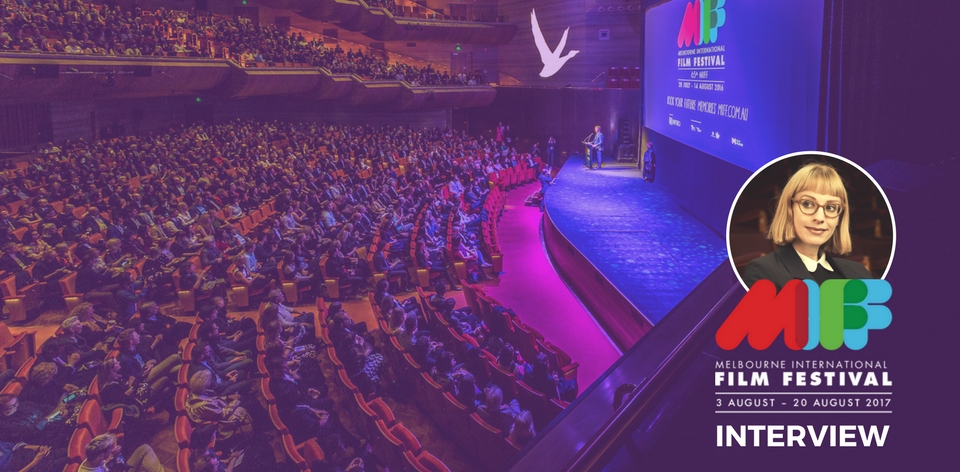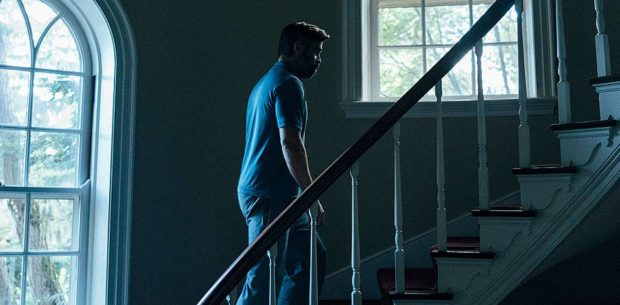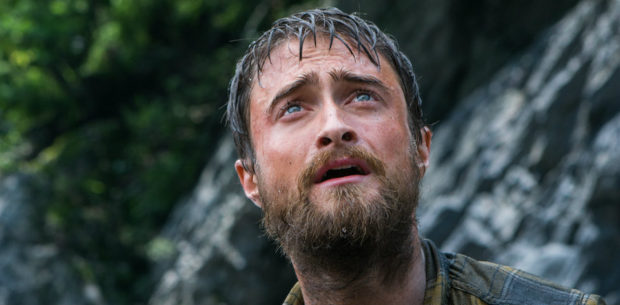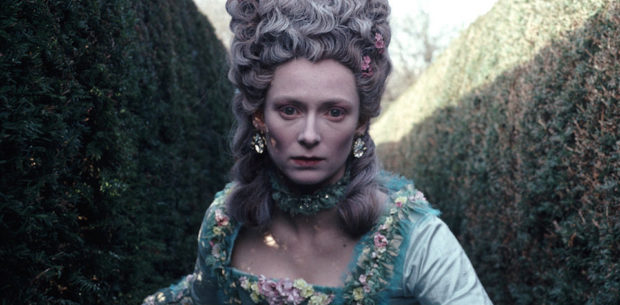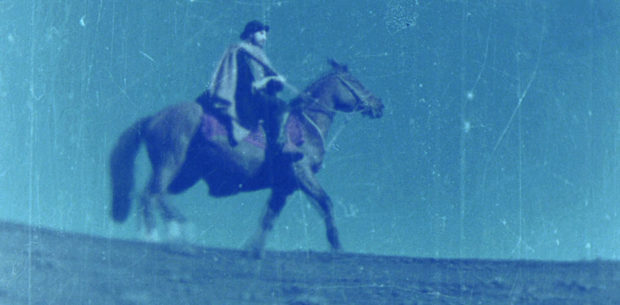The 66th Melbourne International Film Festival announced its full program last week, and it’s an annual pilgrimage for Australian film lovers and the film curious alike.
Containing a whopping 356 films this year, including a number of Australian films making their world premieres, it’s indicative of a local film culture that is hungry for more films.
We spoke with Artistic Director Michelle Carey about this year’s lineup, along with the challenges of programming a festival in the 21st century, her secret favourite weird selections, and the future of MIFF.
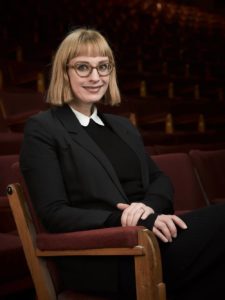 You’ve been the Artistic Director of MIFF since 2011. What’s changed in that time?
You’ve been the Artistic Director of MIFF since 2011. What’s changed in that time?
There’s really been a lot. It was just so simple back then. I’m sure it wasn’t. It certainly felt more simple. The obvious thing I guess is the arrival of digital. Digital has really changed everything in terms of how films are rolled out now. A lot of films just go out quicker. It might be that a number of films that we could have once all put in the festival now just have to go out at a certain date, because the US is releasing it. With social media and digital media now, all the noise has to happen at the same time. So I feel like in terms of the overall film environment, that’s really affected festival as well. But, you know, at the same time, there’s more films. So I don’t feel like we have less choice. Quite possibly the opposite.
You’ve preempted something I’ve been wondering about. One of the trends I’ve noticed this year is the number of films going straight from Sundance or SXSW to Netflix or streaming sometimes within the month. Has that made programming difficult for you or does it just change the type of film you end up offering?
It depends on how you look at it. One could say the latter, because in some ways it cuts out a number of films. When I went to Cannes I didn’t even see Okja, which is really sad because he’s one of my favourite directors, but I knew it was going out to Netflix in June. So in some ways its easier. We know we don’t even need to worry about that one, but obviously we’d love to screen and support certain filmmakers. So it’s certainly changed things. You know, there’s still some films that we try to get that we thought we might not be able to, sometimes we can. You’ve just got to keep trying to get certain films, unless we know for certain it’s been announced publicly that it’s rolling out. But that’s no different to a film that’s announced to be released in the cinemas. If it’s out there, and it’s been advertised at the Dendy or Palace, that’s out there and we know it’s not available to us. So it’s kind of the same, it’s just that one is an online platform and the other is a cinema.
You mentioned that you mostly got the films you were looking for. Is there anything you were craving to get for the Festival that you couldn’t get your hands on or the stars didn’t align?
Look, I think increasingly a lot of Hong Kong and Asian cinema is really hard to get because of piracy. The big piracy issues they have in China, a lot of films will just go out day and date. So the Anne Hui film [Our Time Will Come], for example, she’s a director we really love, and that’s a film that released in Hoyts last week. So that’s a good example of Hong Kong cinema getting harder to get for that reason. They’ll just screen in the suburbs of the cities, and people often don’t notice that they screen there. I mean, it’s great they’re getting the big screen experience, right? I would say that over the last 10 to 15 years, that’s become more challenging to get Asian and Hong Kong cinema.
You mentioned Cannes, and it’s certainly filled out the backbone of the first few waves of titles you announced. A lot of these are pretty hot international releases right now. The Killing of a Sacred Deer is obviously going to have a huge cult following before it’s even released. How do you balance that line between picking things you know are going to be personal favourites or have connected with you at you own festival experience, and finding stuff that will connect with a broader audience?
Yeah, it absolutely is a balance, and there’s obviously no algorithm for it. It’s just an instinct. Sometimes there can be both. The Killing of a Sacred Deer we know is going to be a big film, but he’s also one of my favourite directors. So it’s nice when that happens too. So yeah, we’ve got all those films in Headliners that we know are going to be big, and I’m looking at the page now, and there’s nothing in here that I wouldn’t have programmed. Nothing in that section is programmed just because it’s going to get a crowd. They’re all amazing directors. You’ve got the [Josh and Benny] Safdies, Claire Denis, Agnès Varda. Then, you know, in some of the other sections we do have all of these, I guess, lesser-known gems, that we really love.
So we stand behind everything that’s in the program. Everything is in there for a reason. You know, I think it’s about diversity. I don’t want to say cinema is one thing or another because I love blockbusters as much as I love experimental cinema. It’s all cinema to me. I don’t mind if there’s a romcom in there. I don’t look down upon that genre, as long as it’s done in a smart way, which I think something like Fun Mom Dinner is. It really does stem from a profound philosophy about what cinema is. The other thing is, I want cinema to be accessible. I don’t want it to be for just well-educated, university educated, people in ivory towers. We really want to provide diversity. That’s a really genuine thing that comes from us. It’s not just a tokenistic word we use.
I guess that leads into things like the NextGen programming (now called MIFF Schools and MIFF Kids) that you’ve had running for a few years. Have you noticed that’s been bringing a different demographic to MIFF?
Yeah, I mean less so with that. We’ve been doing that program for 10 years, and we’ve been growing it. What we have noticed over the 6 years I’ve been doing it is just the general younger audience. Whether that just is the ‘next gen’ audience who are turning 18 and tapping into social media, learning about all these films and coming to them, or whether it’s just we’re more cinephile savvy. Maybe younger people are more cinephile savvy because they’re on social media and they read about what’s happening in New York and LA. It’s hard to know. It’s certainly something I noticed, and I don’t want to genralise, but I think younger people have got curiosity for things. They’re happy to go out.
I know when I was first programming, I started off as a programmer in 2008 for MIFF, and I really love experimental cinema, and independent cinema. I was programming a lot of that, and they certainly weren’t getting anywhere near the audiences those sorts of films would get today. I think that’s really exciting.
This is the 10th anniversary of the MIFF Premiere Fund, and it was a massive coup getting Greg McLean’s Jungle as the opening night film, along with six world premieres. What can readers expect from the MIFF Premiere Fund this year?
You mentioned Jungle, which is one end of the spectrum. It’s a big-budget, Daniel Radcliffe starring film. It’s a survival thriller. Then we have three documentaries, I guess kind of smallish in their way. I don’t like to talk about films as big and small. At the other end, you’ve got something like The Song Keepers, which is a really lovely portrait of an Aboriginal choir who sings Lutheran Christian songs, but sings them in their own language. You think about Indigenous music, and the last thing you think about is Lutheran Christian songs. So it’s a lovely portrait of these women and their camaraderie. They go overseas and they travel and take their songs to Germany. That’s one thing, and it’s got a very heavy music focus.
Have You Seen the Listers? by Eddie Martin, who I think is one of the country’s greatest filmmakers, greatest portraitists. Again, it’s sort of looking at this one artist and his family relations. You know, he’s done some pretty unsympathetic things in his life, but he’s a really fascinating character. I think that the Premiere Fund can go both ways. Look at what we’ve done over the 10 years. We’ve had films such as Bastardy, which we’re also screening this year, or even the Ben Lee documentary or Tim Minchin, we have a lot of these great artist-focused documentaries. Then we can do the bigger films like Bran Nue Dae or Jungle at the other end.
Then of course, everything in between. You’ve got all those great arthouse films like Downriver. We’ve got another one this year called Rabbit, which I really love. It’s more of a genre film, but very beautifully shot. Also, The Butterfly Tree, which is a first time filmmaker as well. So I think it shows, again, the diversity of the types of stories we’re wanting to show.
Fantastic. So from the very new to the past, the wonderful Sally Potter is the retrospective highlight for this year. Does her work hold a connection for you in particular?
No, it’s interesting. I’m pretty new to Sally Potter I have to say. She’s someone I thought was always kind of interesting, but I hadn’t really considered all of her work together as a body of work. Then when I saw The Party this year, I thought – she’s someone I always thought we should do a retrospective of some time, I was just waiting for the right time. I thought this is the year. So we started looking into it, and it turns out it’s incredibly hard to get prints of her films. Which I why, I think, if you go online, there haven’t been a lot of retrospectives of her work. In talking to her production company, it turns out they’ve done a lot of co-productions and it’s all very bureaucratic, and there’s all these reasons why it’s been hard to get prints. So it’s been a lot of work doing that, even though it’s not a huge amount of films. She works across so many genres. You’ve got something like Orlando, which is the 400 year-spanning, androgynous, this same character who changes gender. Then something like The Party, which is a much more straight-up satire. You’ve got things like Yes or The Tango Lesson. They’re incredibly diverse. I always love seeing films by directors all together, and making the connections. I think it’s such a rich way to experience a filmmaker. She might also be a discovery for a lot of people.
You mentioned that she was a filmmaker you hadn’t been familiar with. Is there a particular filmmaker that MIFF hasn’t necessarily featured that you would love to see – without giving away future programs of course?
Oh gosh, there’s so many. There’s one I’m thinking about, and again some of these filmmakers I love because they really are such a certain era that their films just feel a little bit alien. Jerry Lewis last year was a little bit like that. You know, some may want to be unkind and say they felt dated, but I just love them. Anyway, what I’m getting at: there’s an Italian filmmaker called Marco Ferreri who I think is really fascinating, and his films are just completely out there. He’s someone I’ve started watching a lot of and thinking about.
If that was difficult to pin down, out of the hundreds of films playing at MIFF this year, you must have a few weird favourites. Is there something in there you’ve got a film crush on or a secret weird film you love?
Secret weird one. There’s one called Lemon by Janicza Bravo. It’s kind of Larry David sort of humour, it’s very dry. I love that film. There are so many. Rey is an unusual film. It’s almost beyond cinema. That’s an interesting one to look into. It’s all shot on different forms of celluloid, and then the filmmaker made the film and he literally buried the celluloid underground, under the soil. Amazing looking. It’s still a narrative film, in some ways. It’s about a 19th century French explorer who comes to Chile, all completely fabricated. It’s not based on a real-life historical figure. Just fascinating to watch.
You’ve probably still got your head in the rest of August, but it’s 66 years this year. Where does MIFF go from here?
That’s really interesting. You know, I think it’s a bit unknown. I was asked that question when I first started…It hasn’t changed radically. I think we’ve got to just keep being better, keep shooting for the stars. Everyone talks about the the competition from things like Netflix or being at home, but I think it just gets more popular every year. So I don’t actually quite buy that argument. It may or may not be affecting year-round exhibition going, but I feel like festivals are getting more and more popular. You I can only see that happening even more with MIFF. What that means for the actual shape of it, I don’t know. I mean, I’m quite interested in exploring different styles of filmmaking, video or YouTube and that kind of thing in the future. But also really defend the big screen experience with the great sound, and the great audio, and watching it with an audience. That’s always going to be the core of what a festival like MIFF is all about.
MIFF runs from 3-20 August 2017. Tickets now on sale at miff.com.au.

